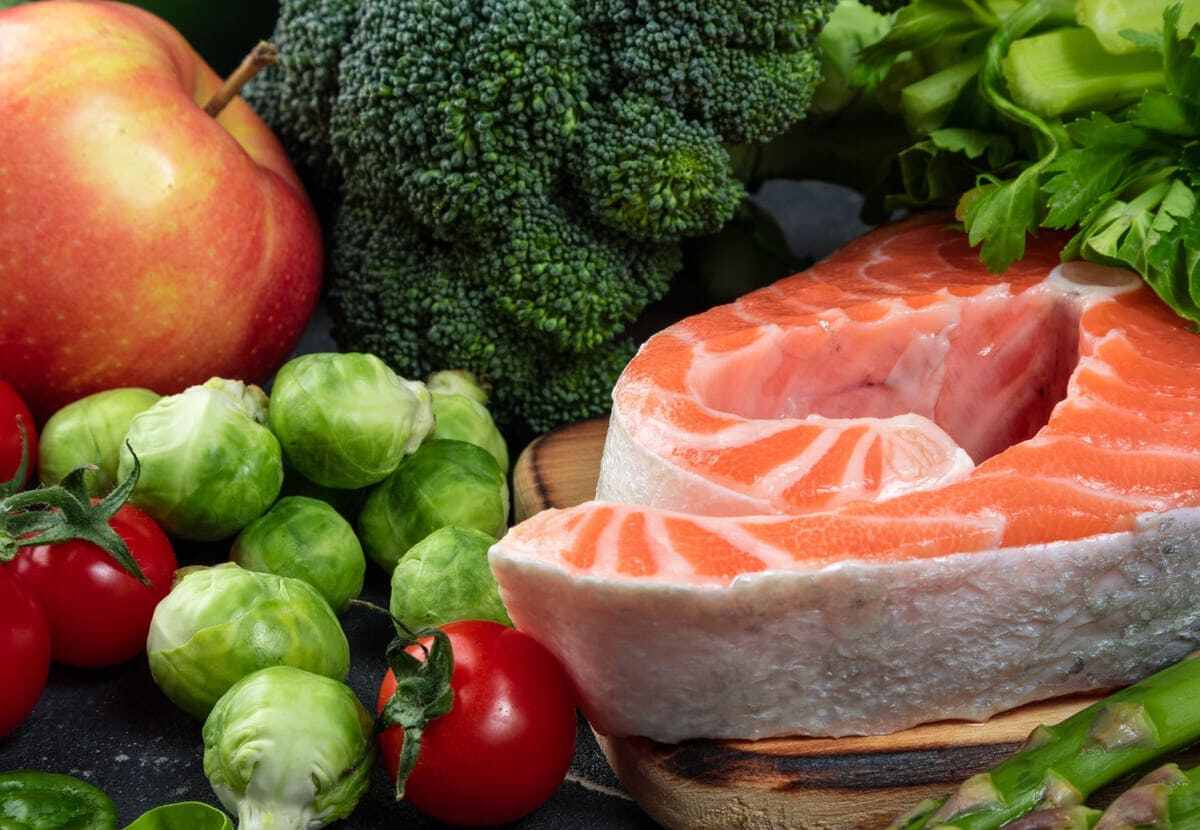Just like us, dogs can benefit from a balanced diet that includes essential nutrients. When it comes to treats, why not offer them something more than just a tasty indulgence?
By combining whole grains and superfoods, we can create functional dog treats that not only satisfy their taste buds but also support their overall well-being.
This blog explores the benefits of whole grains and superfoods for dogs and how combining them can be a winning formula for their health.
The Power of Whole Grains for Dogs
Gone are the days of dog treats full of artificial ingredients – our pets deserve wholesome food. Whole grains are a valuable addition to your dog’s diet as much as ours due to their rich nutritional profile. Here’s a closer look at the health benefits provided by including whole grains in your pet’s diet:
Digestive Health
The fiber content in whole grains is essential for maintaining a healthy digestive system in dogs. Fiber adds bulk to the stool, preventing constipation and promoting regular bowel movements. It also helps regulate the digestive process, ensuring nutrients are properly absorbed and waste is efficiently eliminated.
By including whole grains in your dog’s treats, you can support their digestive health and prevent common gastrointestinal issues.
Weight Management
Whole grains are a healthier alternative to refined grains when managing your dog’s weight. Unlike refined grains, which have been stripped of fiber and nutrients, whole grains provide a more satisfying and filling experience. The fiber content in whole grains helps dogs feel fuller for longer, reducing the likelihood of overeating or begging for more treats.
Additionally, whole grains are lower in calories than refined ones, making them a suitable choice for dogs that need to maintain a healthy weight or lose excess pounds.
Energy Boost

The slow-release carbohydrates in whole grains provide a sustained energy source for dogs. Instead of causing a rapid spike in blood sugar levels, leading to energy crashes, whole grains gradually release glucose into the bloodstream. This steady release of energy helps them stay active and energetic throughout the day, making whole grain treats an excellent choice for active or working dogs who need a reliable fuel source.
Nutritional Variety
Whole grains are not only a great source of carbohydrates and fiber but also contain essential vitamins, minerals, and antioxidants. B vitamins, such as thiamine, riboflavin, and niacin, play a crucial role in metabolism and energy production. Iron is vital for producing red blood cells and oxygen transport, while magnesium supports muscle and nerve function.
Additionally, whole grains often contain antioxidants that help protect cells from damage caused by harmful free radicals, contributing to your dog’s well-being and longevity.
By incorporating whole grains into your dog’s treats, you provide them with a wholesome source of nutrition that goes beyond just empty calories and artificial flavors. Combining complex carbohydrates, fiber, and essential nutrients supports their digestive health, weight management, energy levels, and overall nutritional needs.
However, it’s important to note that every dog is unique, and their dietary requirements may vary based on age, size, activity level, and any existing health conditions. Consulting with your veterinarian is always recommended to ensure the treats align with your dog’s needs.
Superfoods: A Nutritional Powerhouse for Dogs
Superfoods are natural ingredients packed with beneficial nutrients, antioxidants, and phytochemicals. When added to your dog’s treats, these superfoods can enhance the nutritional value and provide a host of advantages. Here are some of them:
Nutrient Density
Superfoods are known for their high nutrient density, meaning they contain a concentrated amount of essential vitamins, minerals, and other beneficial compounds. For example, blueberries are rich in vitamin C and antioxidants, supporting immune function and protecting against cell damage. Spinach is loaded with vitamins A, C, and K and iron and calcium, contributing to overall health and vitality.
Antioxidant Power
Many superfoods are rich in antioxidants – compounds that help combat free radicals and oxidative stress in the body. Free radicals are unstable molecules that can cause cell damage and contribute to aging and disease. Superfoods such as cranberries, acai berries, and kale are known for their high antioxidant content, which can help support your dog’s immune system and heart health and reduce inflammation.
Omega-3 Fatty Acids

Certain superfoods, such as chia seeds, flaxseeds, and salmon, are excellent sources of omega-3 fatty acids. These essential fats are crucial in maintaining healthy skin and coat, reducing inflammation, and supporting brain and eye health. Incorporating these superfoods into your dog’s treats can improve their well-being and promote coat health.
Joint Health
Some superfoods have properties that support joint health and reduce inflammation. For instance, turmeric contains curcumin, a powerful anti-inflammatory compound that can help alleviate joint pain and stiffness. Green-lipped mussels are rich in omega-3 fatty acids and glycosaminoglycans, which can support joint mobility and reduce the risk of arthritis in dogs.
Oral Health
Some superfoods promote good dental hygiene in dogs. For example, parsley contains antimicrobial properties that can help freshen breath and reduce the buildup of bacteria in the mouth. Coconut oil has antibacterial properties that may aid in preventing plaque formation and maintaining healthy gums.
Incorporating superfoods into your dog’s treats can elevate their nutritional value and provide targeted health benefits. From antioxidant support to joint health and oral hygiene, superfoods offer a natural and nutritious way to enhance your dog’s diet. Remember to introduce new ingredients gradually and monitor your dog’s response to ensure they can tolerate and benefit from the chosen superfoods.
Combining Whole Grains and Superfoods for a Perfect Functional Treat
When making homemade treats for your dog, you will want to go beyond just a tasty indulgence and offer them something that supports their overall well-being. Combining whole grains and superfoods can be the key to achieving this goal!
To start, choose a whole grain base such as oats or quinoa. These grains are rich in fiber, carbohydrates, and essential nutrients, forming the foundation of your treats. Fiber promotes healthy digestion and helps maintain regular bowel movements, contributing to your dog’s digestive health.
Next, add superfoods like blueberries, pumpkin, or sweet potatoes. These superfoods not only add flavor but also introduce valuable vitamins, antioxidants, and other beneficial compounds. Blueberries, for example, provide antioxidants that support the immune system, while pumpkin offers fiber and vitamins A and C. Sweet potatoes are packed with dietary fiber, vitamins, and beta-carotene, promoting overall well-being.
To enhance the nutritional profile, consider adding a lean source of quality protein, such as chicken or turkey. Protein supports muscle development, immune function, and overall health in dogs.
When it comes to binders, use natural options like applesauce or mashed bananas instead of artificial additives or excessive sugars. These natural binders not only hold the ingredients together but also bring their nutritional benefits. Applesauce contributes fiber, vitamin C, and antioxidants, while bananas offer potassium, vitamin C, and dietary fiber.
To preserve the nutritional integrity of the ingredients, bake the treats at a low temperature. This method helps retain whole grains and superfoods’ nutritional value, avoiding harmful additives or preservatives.
Serving Taste and Nutrition

Combining whole grains and superfoods allows you to create functional dog treats that offer both taste and nutrition. From the fiber-filled base to the antioxidant-rich superfoods, protein boost, natural binders, and careful baking, these treats provide a well-rounded approach to supporting your pet’s health.
So put on your apron, get creative in the kitchen, and give your furry friend tasty treats that go beyond mere snacks. If you don’t feel like baking, check out Little Chef’s natural superfood treats to offer your beloved pet the treat experience it deserves!
How Often to Offer These Powerhouse Functional Treats?
The frequency at which dogs can enjoy these superfood functional treats depends on several factors, including their overall diet, health condition, age, and activity level. Here are some general guidelines to consider:
- Treats as a supplement: Functional treats should be considered a supplement to your dog’s regular balanced diet. They shouldn’t replace their main meals but rather complement them.
- Moderation is key: While these treats offer health benefits, remember that they are still treats and should be given in moderation. Excessive consumption can lead to weight gain and nutritional imbalances. So, be mindful of the calorie content and adjust your dog’s regular meals to maintain a healthy weight.
- Consider daily caloric intake: Take into account the caloric intake from treats when planning your dog’s daily meals. Treats should typically comprise at most 10% of your dog’s total daily calorie intake. Consult with your veterinarian to determine the appropriate portion size and frequency of treats based on your dog’s needs.
- Tailor to activity level: Consider your dog’s activity level when determining treat frequency. More active dogs may require additional treats to support their energy needs, while less active dogs may require fewer.
- Variety is essential: While these functional treats can be beneficial, you need to offer a balanced variety of treats and not rely solely on one type. Including a range of treats with different ingredients ensures your dog receives a broad spectrum of nutrients.
- Veterinary guidance: Consult your veterinarian to determine your dog’s needs. They can provide personalized recommendations based on breed, age, weight, and any underlying health conditions.
By considering these guidelines and seeking professional advice, you can ensure your furry friend enjoys these potent functional treats in a way that promotes their health and well-being.
Unleash the Power of Whole Grains and Superfoods
When treating our furry friends, it’s vital to choose treats that offer more than just a temporary delight. Combining whole grains and superfoods allows you to create functional dog treats that offer numerous health benefits, including improved digestion, increased energy, and enhanced immune support.
Experiment with different ingredients and recipes to find the perfect combination your dog will enjoy while reaping the rewards of a nutritious treat. And if you want to skip the hassle, go for natural packaged treats from brands you can trust, like Little Chef.
Remember to consult with your veterinarian before making any significant changes to your dog’s diet, especially if they have specific dietary requirements or health conditions.

